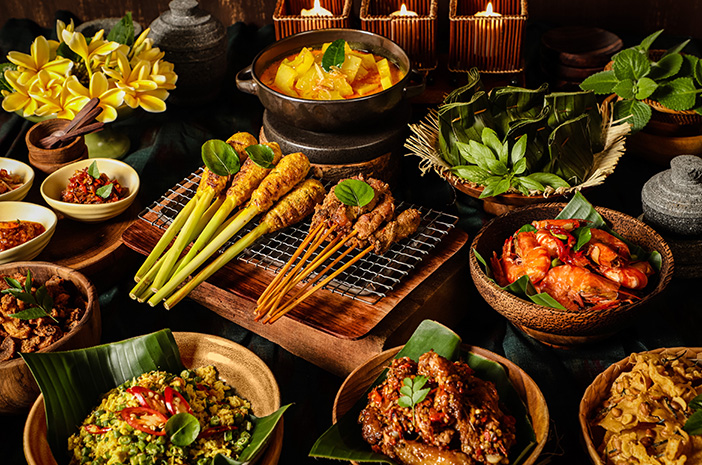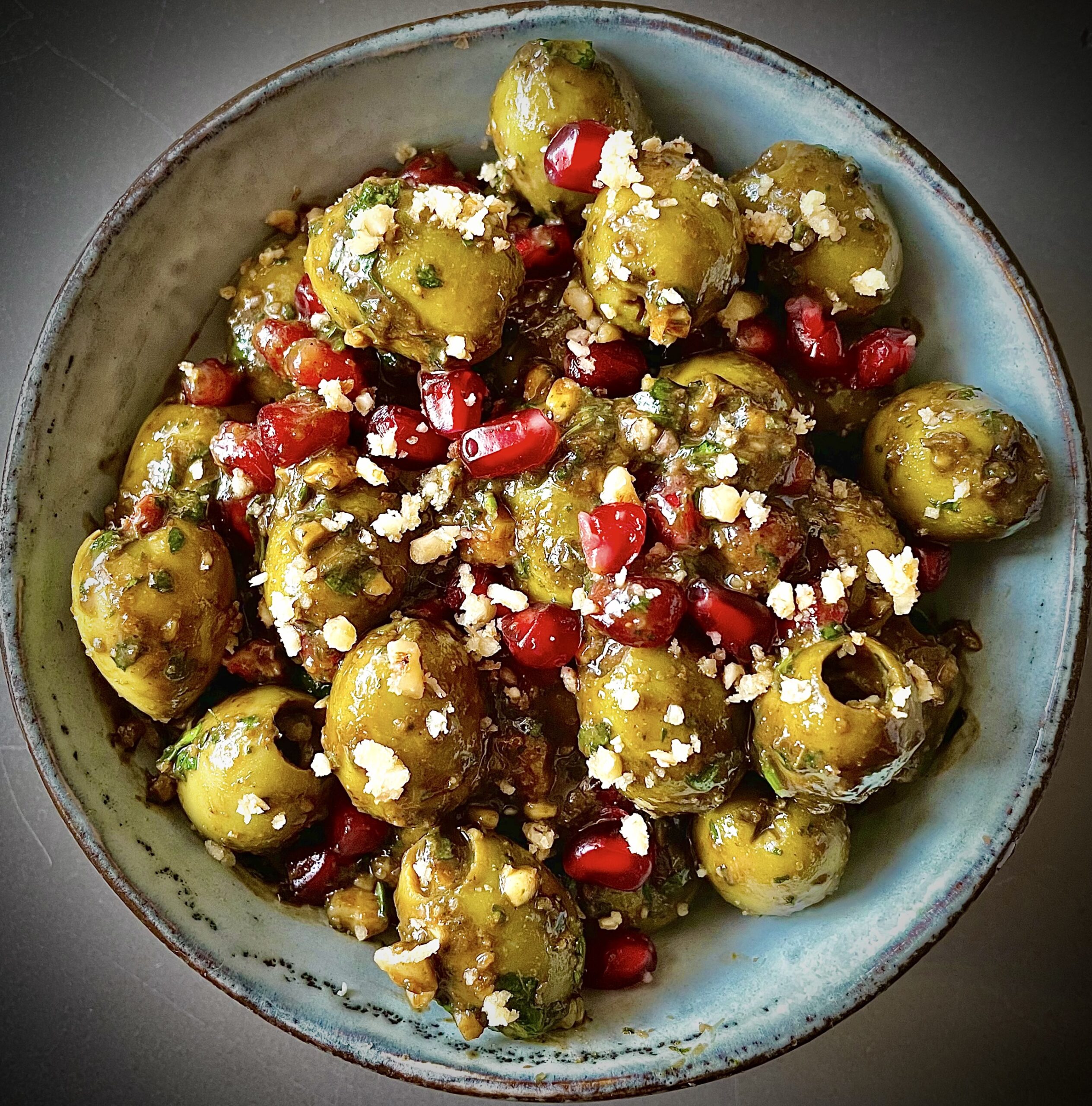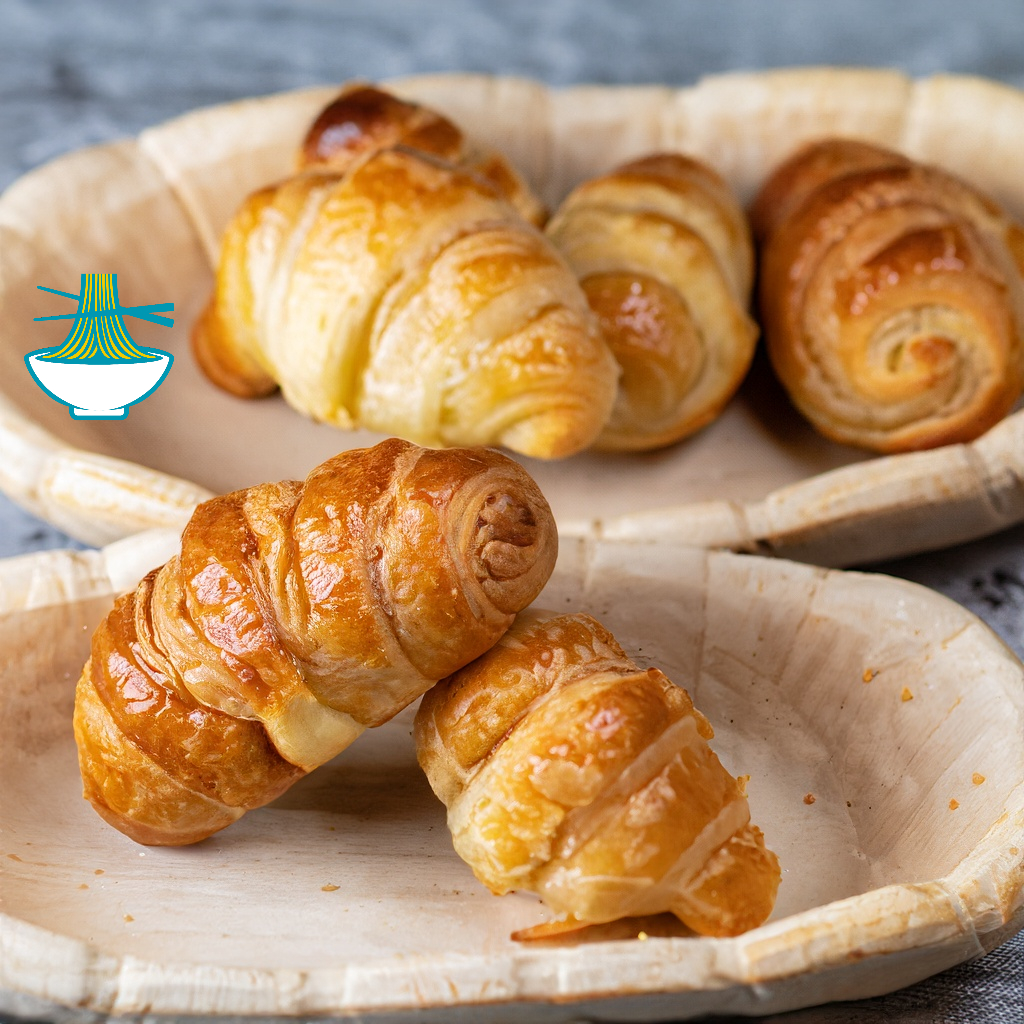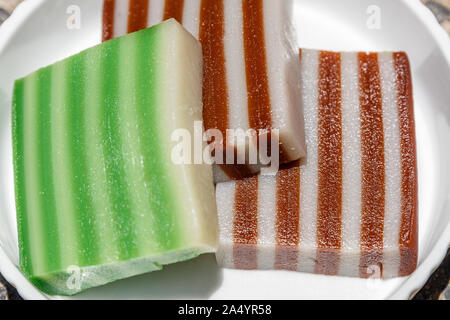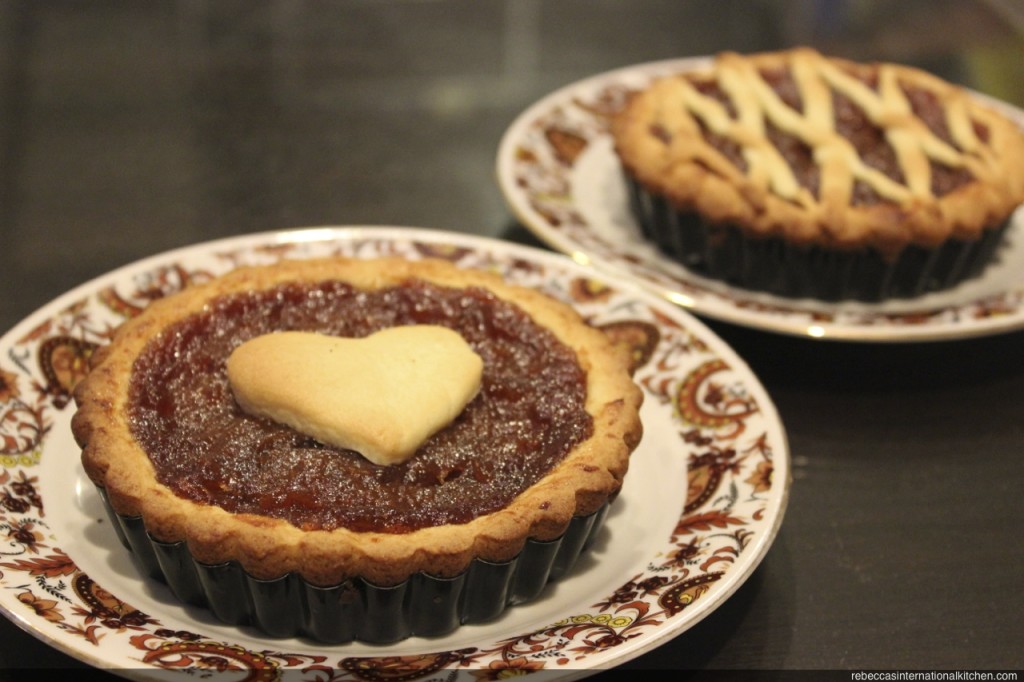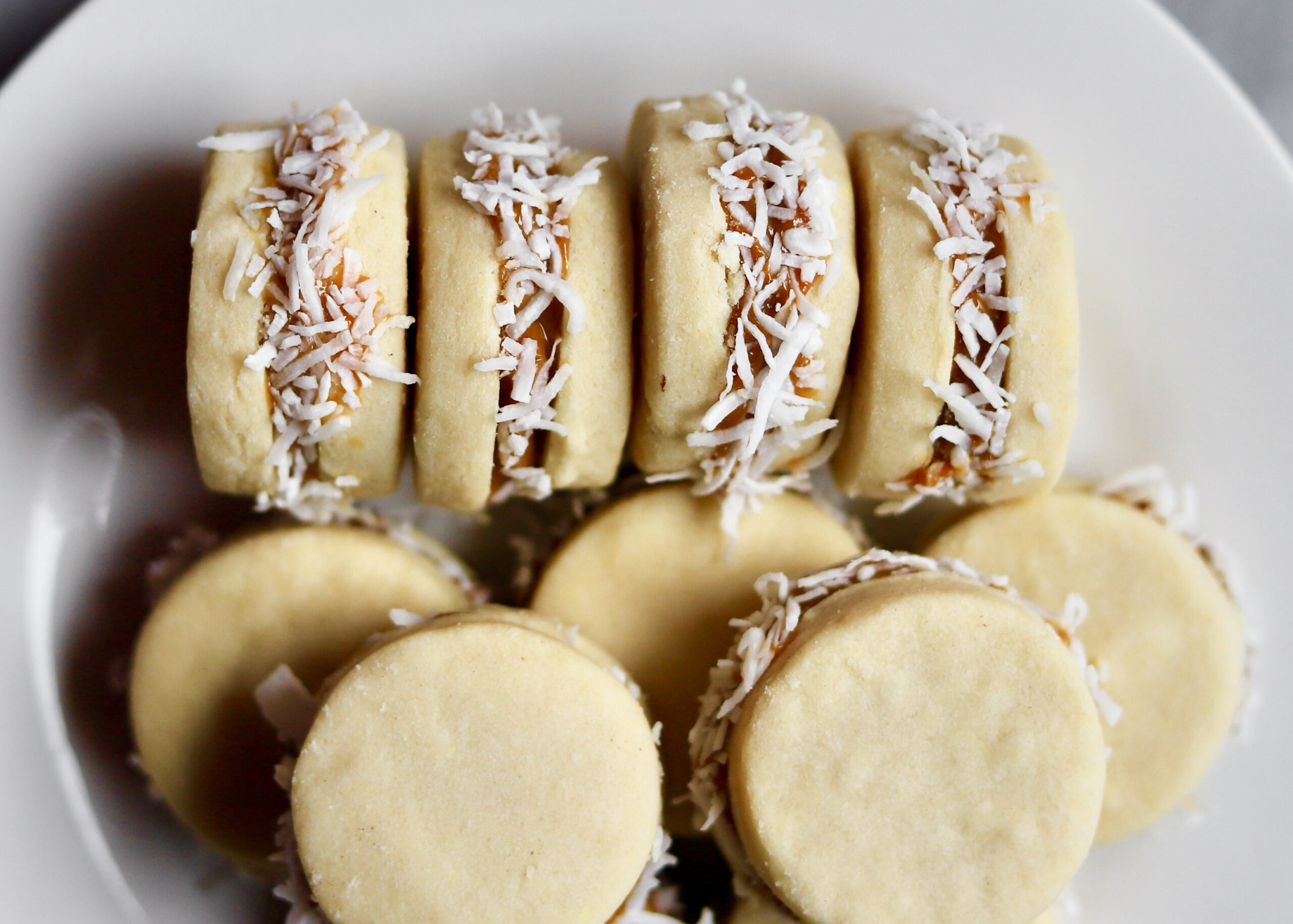
Kue Alfajores are a beloved traditional sweet treat enjoyed across many Latin American countries, particularly in Argentina, Peru, and Colombia. These delicate cookies are characterized by their tender, crumbly texture and luscious fillings, often featuring dulce de leche, fruit jams, or chocolate. With their rich history and cultural significance, Kue Alfajores have become more than just a dessert—they are a symbol of festive occasions, family gatherings, and regional culinary heritage. Whether enjoyed with a cup of coffee or as a gift for loved ones, these cookies continue to enchant both locals and visitors alike. Their simple yet indulgent flavor profile makes them a versatile treat that can be customized to suit various tastes and occasions.
Origins and Cultural Significance of Kue Alfajores
The origins of Alfajores trace back to the Moorish influence on Spanish cuisine, where similar sweet, filled cookies were introduced to Latin America during the colonial era. Over time, each country in the region developed its own unique version, incorporating local ingredients and flavors. In Argentina, Alfajores became a national icon, often associated with celebrations such as Christmas and national holidays. Peru and Colombia also boast their own traditional recipes, with regional twists that reflect local tastes and culinary traditions. Beyond their delicious taste, Alfajores hold cultural significance as symbols of hospitality and family heritage, often exchanged as gifts or served during special occasions.
Historically, these cookies were initially crafted by artisans and local bakers, using simple ingredients like flour, sugar, and local flavorings. As production methods evolved, commercial bakeries began mass-producing Alfajores, making them accessible to a broader audience. Today, they are not only a popular snack but also a cultural emblem, showcasing the rich culinary diversity of Latin America. In many regions, Alfajores are also linked to festivities and community celebrations, emphasizing their role in fostering social bonds and cultural identity. Their enduring popularity speaks to their status as a comfort food that transcends generations.
The cultural significance of Alfajores extends beyond their taste; they are often part of traditional rituals and festivities. For instance, in Argentina, Alfajores are a staple during Christmas, symbolizing warmth and togetherness. In Peru, they are commonly served during religious festivals and family gatherings. The cookies serve as a reminder of shared history and regional pride, connecting communities through their shared love for this sweet delicacy. Their presence at markets, cafes, and family tables underscores their importance as a cultural artifact that encapsulates regional flavors and traditions.
In recent years, Alfajores have gained international recognition, with culinary enthusiasts and tourists seeking out authentic recipes and artisanal versions. This global interest has helped preserve traditional methods while inspiring innovative twists. Despite modern adaptations, the core essence of Alfajores—simple ingredients transformed into a decadent, comforting treat—remains unchanged. As a result, these cookies continue to serve as a delicious link to Latin America’s rich cultural tapestry, celebrated both locally and worldwide.
The cultural significance of Alfajores highlights their role as more than just a sweet snack; they are a testament to regional history, social customs, and culinary artistry. Their enduring popularity underscores their importance as a symbol of Latin American identity and hospitality, making them a cherished part of the region’s gastronomic landscape.
Key Ingredients Used in Making Authentic Kue Alfajores
Authentic Kue Alfajores are crafted using a selection of simple yet high-quality ingredients that come together to create their signature delicate texture and rich flavor. The primary components include fine wheat flour, which provides the base structure for the cookies. Cornstarch or starch flour is often added to enhance the crumbly, melt-in-the-mouth quality, giving Alfajores their characteristic tenderness. Unsalted butter or margarine is used to enrich the dough, adding a subtle richness that balances the sweetness.
Sweetening the cookies typically involves granulated sugar or powdered sugar, depending on the recipe. Many traditional recipes also incorporate egg yolks, which contribute to the dough’s elasticity and flavor complexity. Vanilla extract or other flavorings such as lemon zest or cinnamon are added to impart aromatic notes that elevate the overall taste. For the filling, dulce de leche—a luscious caramelized milk spread—is the quintessential choice, known for its creamy consistency and sweet, caramel flavor.
Additional ingredients vary by regional recipe and personal preference. Some recipes include a pinch of salt to enhance sweetness and flavor depth. Others add ingredients like coconut, nuts, or cocoa powder for regional twists. The choice of fillings and flavorings allows for customization, making Alfajores adaptable to different tastes and occasions. The key to authentic Alfajores is balancing these ingredients to achieve a tender, crumbly texture with a rich, sweet flavor profile.
In recent years, alternative ingredients such as gluten-free flours, plant-based butters, and natural sweeteners have been incorporated to cater to dietary restrictions while maintaining the cookies’ traditional appeal. Despite these variations, the core ingredients remain consistent, emphasizing simplicity and quality. The harmony of these ingredients results in a melt-in-the-mouth cookie that pairs beautifully with various fillings and toppings, making Alfajores a versatile and beloved treat.
Ultimately, the key to authentic Kue Alfajores lies in selecting high-quality ingredients and maintaining precise proportions. This ensures the cookies’ delicate crumb, rich flavor, and satisfying sweetness—hallmarks that have made them a cherished culinary tradition across Latin America.
Step-by-Step Guide to Preparing Kue Alfajores at Home
Preparing authentic Kue Alfajores at home involves a straightforward process that yields tender, flavorful cookies perfect for filling and decorating. Begin by gathering all ingredients: flour, cornstarch, butter, sugar, egg yolks, vanilla extract, and a pinch of salt. Start by creaming the softened butter and sugar together until light and fluffy, which helps create a tender cookie. Then, beat in the egg yolks and vanilla extract to incorporate moisture and flavor.
In a separate bowl, sift together the flour, cornstarch, and salt to ensure an even mixture. Gradually add the dry ingredients to the butter mixture, mixing gently until a soft dough forms. It’s best to work quickly and avoid overmixing to keep the dough tender. Once combined, shape the dough into a flat disc, wrap it in plastic wrap, and refrigerate for at least 30 minutes to firm up, making it easier to roll out.
After chilling, preheat your oven to around 350°F (175°C). Lightly flour your work surface and rolling pin, then roll out the dough to about 1/4 inch thickness. Use cookie cutters, typically round, to cut out cookies of your desired size. Place the cut cookies onto a baking sheet lined with parchment paper, leaving space between them. Bake for approximately 10-12 minutes, or until the edges are just golden.
Once baked, allow the cookies to cool on a wire rack completely before assembling. To fill the Alfajores, spread a generous layer of dulce de leche or your preferred filling on one cookie, then top with another to form a sandwich. For a polished presentation, you can roll the edges in desiccated coconut or dust with powdered sugar. The final step involves decorating as desired, perhaps with chocolate drizzle or additional toppings, to enhance visual appeal and flavor.
This step-by-step method offers a reliable way to create authentic Alfajores at home, capturing their traditional texture and flavor. With practice, you can customize fillings, sizes, and decorations to suit your preferences, making each batch uniquely yours. Homemade Alfajores are perfect for special occasions, gifts, or simply indulging in a timeless Latin American delicacy.
Variations and Regional Twists of Kue Alfajores Recipes
While the classic Alfajores feature a simple, tender cookie filled with dulce de leche, regional variations and twists add exciting diversity to this traditional treat. In Argentina, the most popular version involves sandwiching a generous layer of dulce de leche between two buttery cookies, often rolled in coconut flakes or powdered sugar. These are sometimes coated with chocolate or garnished with sprinkles for added flavor and visual appeal.
Peruvian Alfajores, on the other hand, are typically softer and often flavored with lemon or orange zest, giving them a citrusy aroma. They may also include a dusting of powdered sugar or a coating of chocolate on the edges. Colombian Alfajores sometimes incorporate a hint of cinnamon or are filled with fruit jams like guava or blackberry, offering a regional twist that reflects local tastes.
In some countries, variations include adding ingredients such as shredded coconut, chopped nuts, or cocoa powder into the dough for richer flavors or different textures. For example, chocolate-filled Alfajores are popular in Mexico and other parts of Central America, where cocoa and chocolate are integral to local cuisine. Additionally, gluten-free or vegan versions have emerged, using alternative flours and plant-based fillings to cater to dietary needs.
Regional twists also extend to presentation and serving styles. Some recipes feature a double layer of cookies with multiple fillings, while others incorporate decorative elements like icing or edible glitter. These variations showcase how local ingredients, tastes, and culinary traditions influence the evolution of Alfajores, making each version a unique cultural expression.
Experimenting with regional twists allows bakers and enthusiasts to explore a broad spectrum of flavors and textures, enriching the traditional Alfajores experience. Whether you prefer the classic or a regional variation, each offers a delicious glimpse into Latin America’s diverse culinary heritage.
Tips for Achieving the Perfect Texture and Flavor
Achieving the ideal texture and flavor in homemade Alfajores requires attention to detail and quality ingredients. To ensure the cookies are tender and crumbly, it’s crucial to use softened, high-quality butter and avoid overmixing the dough, which can develop gluten and lead to tougher cookies. Chilling the dough before rolling out helps prevent spreading during baking and makes it easier to handle, resulting in uniformly shaped cookies.
Using cornstarch or starch flour in the dough is essential for achieving the signature melt-in-the-mouth texture. Be precise with measurements, as too much flour can make the
